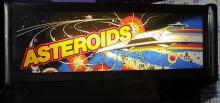NASA recently announced that Earth has a "Trojan asteroid." This newly discovered celestial body is naturally being fingered as Nibiru by many people. But is it really?
First, some science. Each orbiting planet has up to five possible "Lagrange points." These are points along the planet's orbit in which some other object can also orbit, without getting in anyone's way or falling in or out of orbit. Think of them as balance points, balancing the gravity of the main planet, the sun, and any neighboring planets.
The Lagrange points are places where a relatively small object (like a big chunk of rock) can orbit in synch with the main planet. These items, stuck in geosynchronous orbit, are called "Trojan asteroids." Many planets have Trojan asteroids tagging along in their wake, or running up ahead. We have identified nine Trojans in Neptune's orbit, four Mars Trojans, and so forth.
It's reasonable to expect that Earth would have a few of these Trojans as well. The problem is that, in the most likely location for them, they would only be visible during the day. And it's pretty hard to spot objects in outer space during the day!
But every day NASA comes up with some new imaging technology. And they recently developed technology which allowed them to identify an Earth Trojan, which was given the romantic name 2010 TK7.
Early data is that 2010 TK7 has a diameter of about 900 feet. We do not yet have any information on its possible composition. However, knowing that it's there, it becomes a better candidate for exploration than Mars, due to its proximity.
So is 2010 TK7 the famed rogue planet which is prophesied to scream in from outer space and destroy all life on Earth in the year 2012? I rate this possibility as EXTREMELY unlikely. (All caps: EXTREMELY.)
For one thing, it is a simple fact of astrophysics that by definition a Trojan asteroid cannot impact the main planet. If there were even the slightest possibility of collision, it wouldn't be a Trojan asteroid, end of story.
For another thing, 2010 TK7 is pretty small. For reference, the moon's diameter is 2,156 miles. Comet Hale-Bopp is 25 miles in diameter, Halley's Comet is 6 miles in diameter, and Chicxulub (the comet which destroyed the dinosaurs) was 7.45 miles in diameter. By comparison, TK7's 900-foot diameter seems unlikely to destroy the entire planet.
Don't get me wrong, it would be a problem if it somehow was able to make Earth impact! But it's a far cry from being able to wreak the sort of effects that are rumored for Nibiru.
First, some science. Each orbiting planet has up to five possible "Lagrange points." These are points along the planet's orbit in which some other object can also orbit, without getting in anyone's way or falling in or out of orbit. Think of them as balance points, balancing the gravity of the main planet, the sun, and any neighboring planets.
The Lagrange points are places where a relatively small object (like a big chunk of rock) can orbit in synch with the main planet. These items, stuck in geosynchronous orbit, are called "Trojan asteroids." Many planets have Trojan asteroids tagging along in their wake, or running up ahead. We have identified nine Trojans in Neptune's orbit, four Mars Trojans, and so forth.
It's reasonable to expect that Earth would have a few of these Trojans as well. The problem is that, in the most likely location for them, they would only be visible during the day. And it's pretty hard to spot objects in outer space during the day!
But every day NASA comes up with some new imaging technology. And they recently developed technology which allowed them to identify an Earth Trojan, which was given the romantic name 2010 TK7.
Early data is that 2010 TK7 has a diameter of about 900 feet. We do not yet have any information on its possible composition. However, knowing that it's there, it becomes a better candidate for exploration than Mars, due to its proximity.
So is 2010 TK7 the famed rogue planet which is prophesied to scream in from outer space and destroy all life on Earth in the year 2012? I rate this possibility as EXTREMELY unlikely. (All caps: EXTREMELY.)
For one thing, it is a simple fact of astrophysics that by definition a Trojan asteroid cannot impact the main planet. If there were even the slightest possibility of collision, it wouldn't be a Trojan asteroid, end of story.
For another thing, 2010 TK7 is pretty small. For reference, the moon's diameter is 2,156 miles. Comet Hale-Bopp is 25 miles in diameter, Halley's Comet is 6 miles in diameter, and Chicxulub (the comet which destroyed the dinosaurs) was 7.45 miles in diameter. By comparison, TK7's 900-foot diameter seems unlikely to destroy the entire planet.
Don't get me wrong, it would be a problem if it somehow was able to make Earth impact! But it's a far cry from being able to wreak the sort of effects that are rumored for Nibiru.
